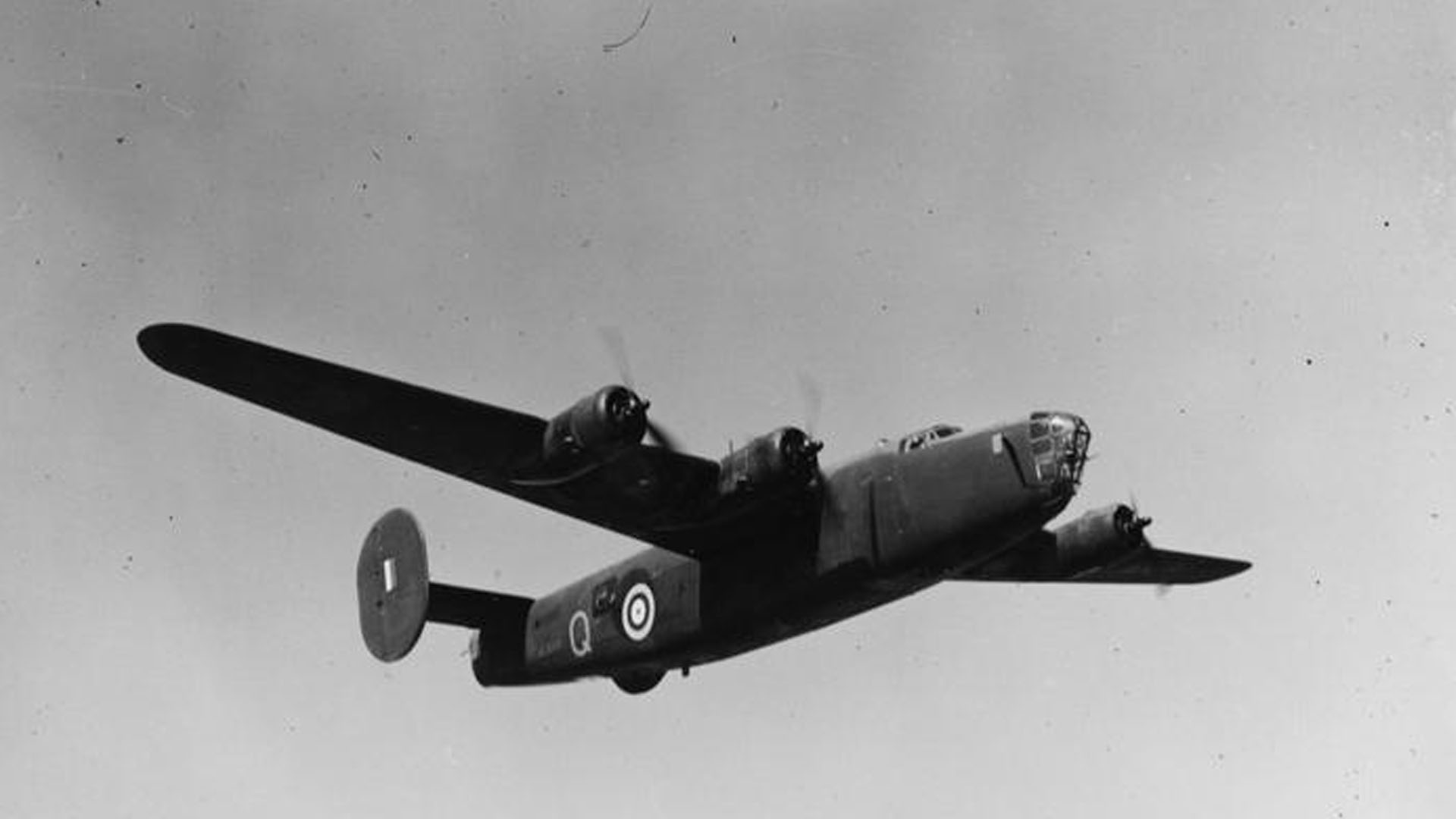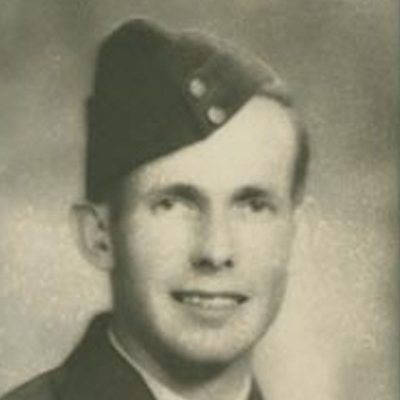On 16th March 1942, Consolidated Liberator AL577 LB-30 crashed in bad weather. The Mk II plane came down on Slieve na Glogh on the Cooley Peninsula. A memorial plaque stands today on high ground at Jenkinstown, near Dundalk, Co. Louth, Ireland.
This incident would prove to be the worst airtime crash in Ireland when it came to the loss of life. In all, 15 men lost their lives when the bomber came down.
The Liberator crash on 16th March 1942 was the second of three fatal incidents in this mountainous area of Louth. The other accidents came in the form of a British Hudson bomber in 1941 and an American P-51 Mustang fighter 1944.
RAF 108 Squadron
RAF 108 Squadron had been serving in North Africa engaging in bombing campaigns. In December 1941, the RAF decided to switch from Wellington bombers to the American built Consolidated Liberator. Its initial success soon led to the entire squadron swapping to the American planes.

Imperial War Museum Photo: ME(RAF) 3495 (Part of the Air Ministry Second World War Official Collection). Consolidated Liberator B Mark II, AL530 'Q', of 'B' Flight, No. 108 Squadron RAF based at Fayid, Egypt, in flight. On the disbandment of the Squadron in December 1942, this aircraft was transferred to the Special Liberator Flight. Copyright Official RAF Photographer.
In March, a crew of experienced men from 108 Squadron flew back to the United Kingdom to collect new Liberators and return to the front. Their flight would take them from Egypt, across to Gibraltar and across to England.
Liberator AL577 Crash
Liberator AL577 of 108 Squadron HQ Middle East took off from Egypt at 1655hrs on 15th March 1942. The destination would take them over the Mediterranean and France to RAF Hurn in Dorset, England.
There were 19 men with full kit on board. A six-man crew operated the plane carrying thirteen passengers from the same squadron. In all, the plane held six pilots, three navigators, three wireless operator/air gunners, and one mechanic. The men were from the English, Scottish, Australian, Canadian, and New Zealander forces.
Shortly after flying over the French coast towards England, the crew experienced their first problems. Reports suggest the plane was ordered to return to Egypt due to bad weather over the British Isles. These orders were acknowledged.
Veering off course in the bad weather, the plane ended up flying over the east coast of Ireland. The crew saw city lights, believed it to be Dublin and set course for RAF Greencastle in Co. Down as they were by then short on fuel.
The American bomber crashed at Slieve na Glogh on the Cooley Peninsula near Dundalk around 1410hrs on 16th March 1942.
The aircraft was West of its course and crashed into high ground. As the accident occured in Eire and the evidence available suggested that the cause was due to disobedience of orders and bad navigation, it was considered by Accidents Gloucester, that no useful purpose would be served by ordering an investigation.
Official Incident Report
Of all those on board, 15 died in the incident. Dundalk Hospital, Ireland received the remaining four injured parties. When recovered enough they moved to Daisy Hill Hospital, Newry, Co. Down then on to Stranmillis Military Hospital, Belfast, Co. Antrim.
The transcript from the accident report contains some errors. The RAF would not have had a presence in Ireland at that time. RAF Hurn was near Bournemouth, Dorset, UK. Dundalk, Co. Louth was the scene of the accident.
A letter from Liberator AL577
We ran into the worst weather I have ever experienced in three years of flying. It was almost impossible to see out own wing tips. We all knew we should require a good deal of wireless assistance if we hoped to get down safely. Then the real trouble began – the Wireless Operator could not contact any station in England because of some fault in the wireless equipment due to weather conditions.
We knew we were over England and we lost height to two thousand feet in order to enable us to pinpoint our exact position, but the weather was just as bad at two thousand feet. It would have been unwise to do down any further because of barrage balloons or mountains so we climbed up again and cruised around hoping for the weather to clear, but it did not; instead, it became even worse. By this time we had been in the air over fifteen hours and we were carrying fuel for just over fifteen and half hours.
We were preparing to bale out and chance it but before we could do so someone spotted lights on the ground. The captain immediately dived down over the lights which we knew was Dublin and circled around at above five hundred feet. About this time two of our four engines ceased running and we were unable to climb very well. The captain then headed straight along the coast of Eire to try to land at an aerodrome in North Ireland.
We had been flying for about half an hour after leaving the lights and all this time we were gradually losing height. There was a terrific crash and when I awoke I found myself lying about twenty yards from the machine, which by this time was practically burned out. I tried to stand up, but couldn’t, as I found later in hospital I had fractured my spine in two places. I managed to crawl around in a sort of daze and soon saw there was not much I could do for any of the other chaps in my condition.
So I crawled over the mountainside to look for help, but there was no one in sight, I started to crawl back to the machine but fell unconscious before I got there. I woke up while being carried down the mountain on a stretcher and found that we were not discovered until three hours had elapsed.
Written from Majestic Hotel, No. 7 P.R.C., R.A.F., Harrogate, Yorks, 5th June 1942
Liberator Crew
| Last Name | First Name | Rank | Role | Information |
|---|---|---|---|---|
| Wells | Richard John | Wing Commander | Pilot | Distinguished Flying Cross. RAF 39918. Killed. |
| Tolson | John Peile | Pilot Officer | Co-Pilot | RAF 67640. Killed. |
| Morey | Paul Herrick | Sergeant | Navigator | RAF 917067. Killed |
| Gibbons | Henry James | Sergeant | Wireless Operator / Air Gunner | RAF 948393. Killed. |
| Ingram | Charles Joseph | Sergeant | Wireless Operator | RAF 916998. Killed. |
| Barrett | Francis Charles | Flight Lieutenant | Air Gunner | Distinguished Flying Cross. RAF 77959. Killed. |
| Anderson | James Robert | Flying Officer | Passenger (Pilot) | Distinguished Flying Cross. RAF 795088. Survived. |
| Amos | Cyril Rowland | Sergeant | Passenger (Pilot) | RAF 1182180. Survived. |
| Williams | Lindsay Ross | Flight Sergeant | Passenger (Pilot) | RAAF 402429. Killed. |
| Stephens | Wilfred Bertrand | Pilot Officer | Passenger (Pilot) | RAF 113267. Killed. |
| Buchanan | George | Flight Sergeant | Passenger (Pilot) | RAF 1060536. Killed. |
| Sloman | Herbert William Thornley | Flight Sergeant | Passenger (Pilot) | RAAF 402677. Killed. |
| Pattison | Thomas Edward | Sergeant | Passenger (Wireless Operator / Air Gunner) | RAF 644625. Survived. |
| Hayden | Sydney Frederick | Sergeant | Passenger (Wireless Operator / Air Gunner) | RAF 910905. Survived. |
| Brooks | Walter Paul | Sergeant | Passenger (Wireless Operator / Air Gunner) | RAF 931402. Killed. |
| Goodenough | Carlton Stokes | Flight Sergeant | Passenger (Navigator) | RCAF R/62738. Killed. |
| Jordan | Leslie George | Flight Sergeant | Passenger (Navigator) | RAF 905148. Killed. |
| King | George Frederick | Pilot Officer | Passenger (Navigator) | RCAF J/15525. Killed. |
| Brownlie | Andrew McMillan Smith | Sergeant | Passenger (Engineer / Fitter) | RAF 546659. Killed. |
In 1993, people of Louth arranged a memorial plaque to display near the accident site. From the hillside where Liberator AL557 came down, walkers can view the east coast of Ireland. On a clear day, the peak of Sugar Loaf Hill in the Wicklow Mountains is visible. Families and friends of those killed in the crash attended the unveiling.

